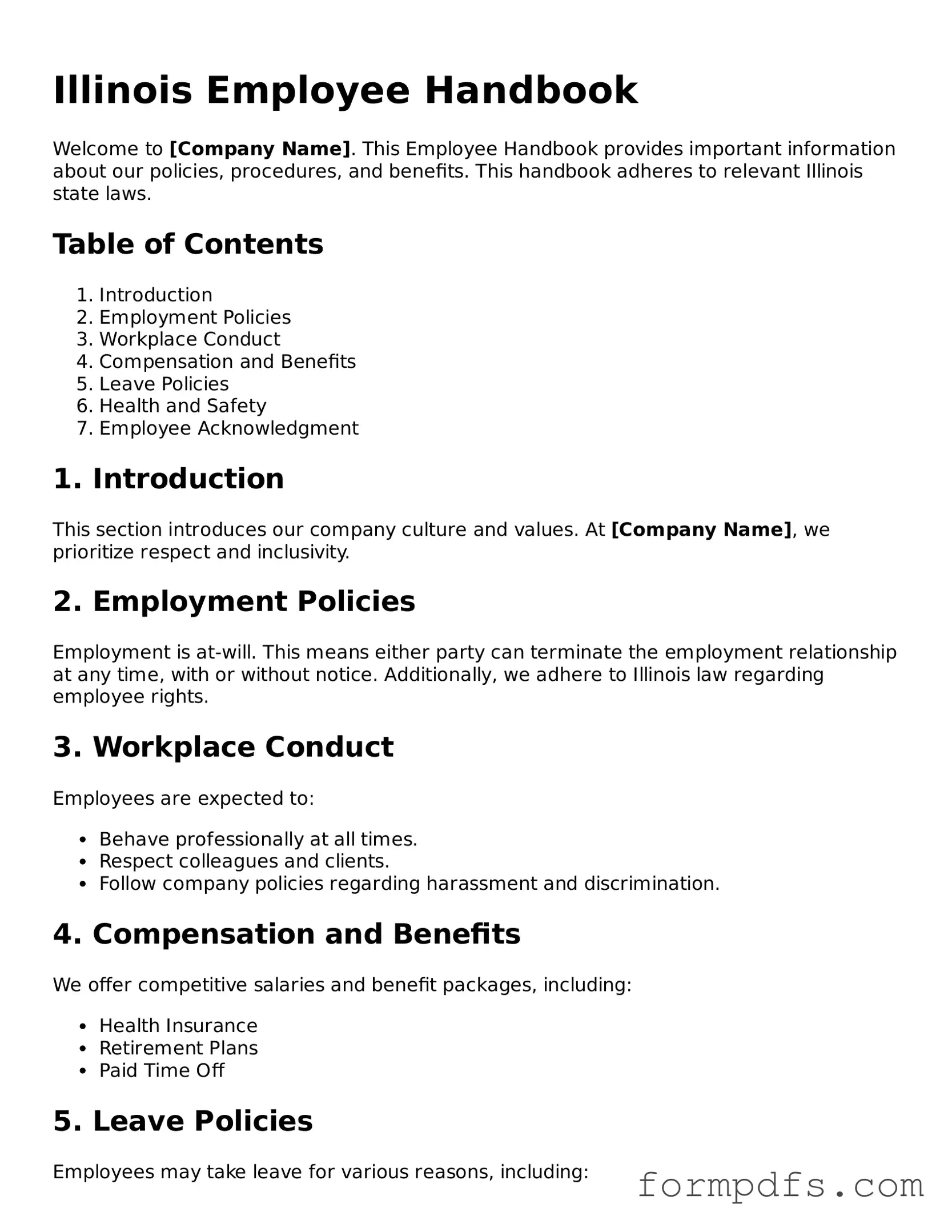What is the Illinois Employee Handbook form?
The Illinois Employee Handbook form is a document designed to outline the policies, procedures, and expectations of an employer towards their employees. It serves as a guide for employees, detailing important information about workplace conduct, benefits, and the rights and responsibilities of both parties.
Why is an Employee Handbook important?
An Employee Handbook is crucial for establishing clear communication between employers and employees. It helps to prevent misunderstandings by setting forth the rules and regulations of the workplace. Additionally, it can protect the employer by documenting policies and ensuring compliance with state and federal laws.
Who should have an Employee Handbook?
All employers, regardless of size, should consider having an Employee Handbook. Whether you run a small business or a large corporation, a handbook can provide a consistent framework for managing employee relations and expectations.
What should be included in the Employee Handbook?
Key components of an Employee Handbook should include an introduction to the company, employment policies, workplace conduct guidelines, anti-discrimination policies, leave policies, benefits information, and procedures for reporting grievances. Each section should be tailored to reflect the specific culture and needs of the organization.
How often should the Employee Handbook be updated?
It is advisable to review and update the Employee Handbook at least annually or whenever there are significant changes in laws or company policies. Regular updates ensure that the information remains relevant and compliant with current regulations.
Do employees need to sign the Employee Handbook?
While it is not legally required for employees to sign the handbook, obtaining a signed acknowledgment can be beneficial. This signature serves as proof that the employee has received, read, and understood the policies outlined in the handbook.
Can an Employee Handbook be used in legal disputes?
Yes, an Employee Handbook can be a critical document in legal disputes. If an employee claims unfair treatment or violation of rights, the handbook can provide evidence of the company's policies and the expectations set forth for employees. However, it is important that the handbook is clear, consistent, and legally compliant.
Is it necessary to consult a lawyer when creating an Employee Handbook?
While it is not strictly necessary, consulting a lawyer is highly recommended. Legal professionals can ensure that the handbook complies with all applicable laws and regulations, minimizing the risk of legal issues down the line.
How can I ensure my Employee Handbook is effective?
To create an effective Employee Handbook, involve key stakeholders in the drafting process, use clear and straightforward language, and regularly solicit feedback from employees. Training sessions can also help reinforce the policies and ensure that employees understand their rights and responsibilities.
Where can I find a template for the Illinois Employee Handbook?
Templates for the Illinois Employee Handbook can often be found online through various legal and human resources websites. Additionally, professional organizations and local chambers of commerce may provide resources or templates that are tailored to Illinois law.
